Did you know that businesses can't even ask for reviews directly on Yelp? And even some totally legit Yelp reviews end up getting filtered and buried.
Now, you might be wondering if you can just avoid Yelp reviews altogether as a local business owner. Hold on a sec because Yelp is actually a necessary review site.
82% of people visit Yelp with the intention of purchasing.
If managed well, Yelp reviews can be like a powerful weapon in your marketing arsenal.
So, don't dismiss Yelp altogether. Let's understand why you should use it to your advantage and how Yelp can help you to grow your business year after year.
Table Of Contents:
- Why Yelp?
- How Should You Respond To Yelp Reviews?
- How To Get Yelp Reviews & Earn Customer Trust?
- How Consumers Read Yelp Reviews?
- How Does Yelp Handle Fake Reviews?
- Why Are Some Yelp Reviews Filtered?
- How Do You Recover Filtered "Not Recommended" Reviews?
- Wrapping Up!
- FAQ (Frequently Asked Questions)
You can directly jump to a section of your choice or keep scrolling.
Why Yelp?
- Out of all reviews published online, 6% are on Yelp.
- More than 5 million businesses are present on Yelp.
- Yelp has 178+ million visitors every month.
- Each new star you earn on Yelp can boost your revenue by 9%.
- 45.18% of consumers actually read reviews on Yelp before visiting a business location.
- 97% of consumers are spending their money on businesses they find on Yelp.
- Yelp has 244 million reviews in 2021.
- There are 90 million Yelp mobile users.
- Yelp is the 44th most visited site in the US, according to Alexa.
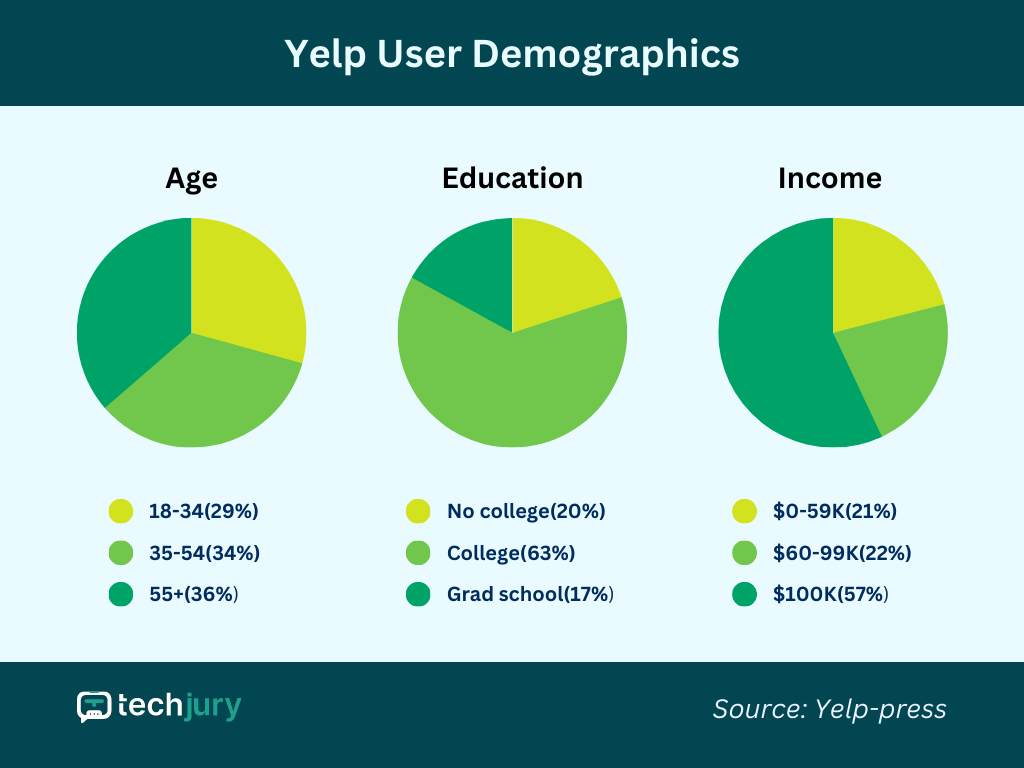
How Should You Respond To Yelp Reviews?
Here are the five principles for handling reviews on Yelp like a champ:
Keep It Simple
For positive reviews, use short, generic responses like a quick "thank you." You want to avoid sounding too promotional or insincere.
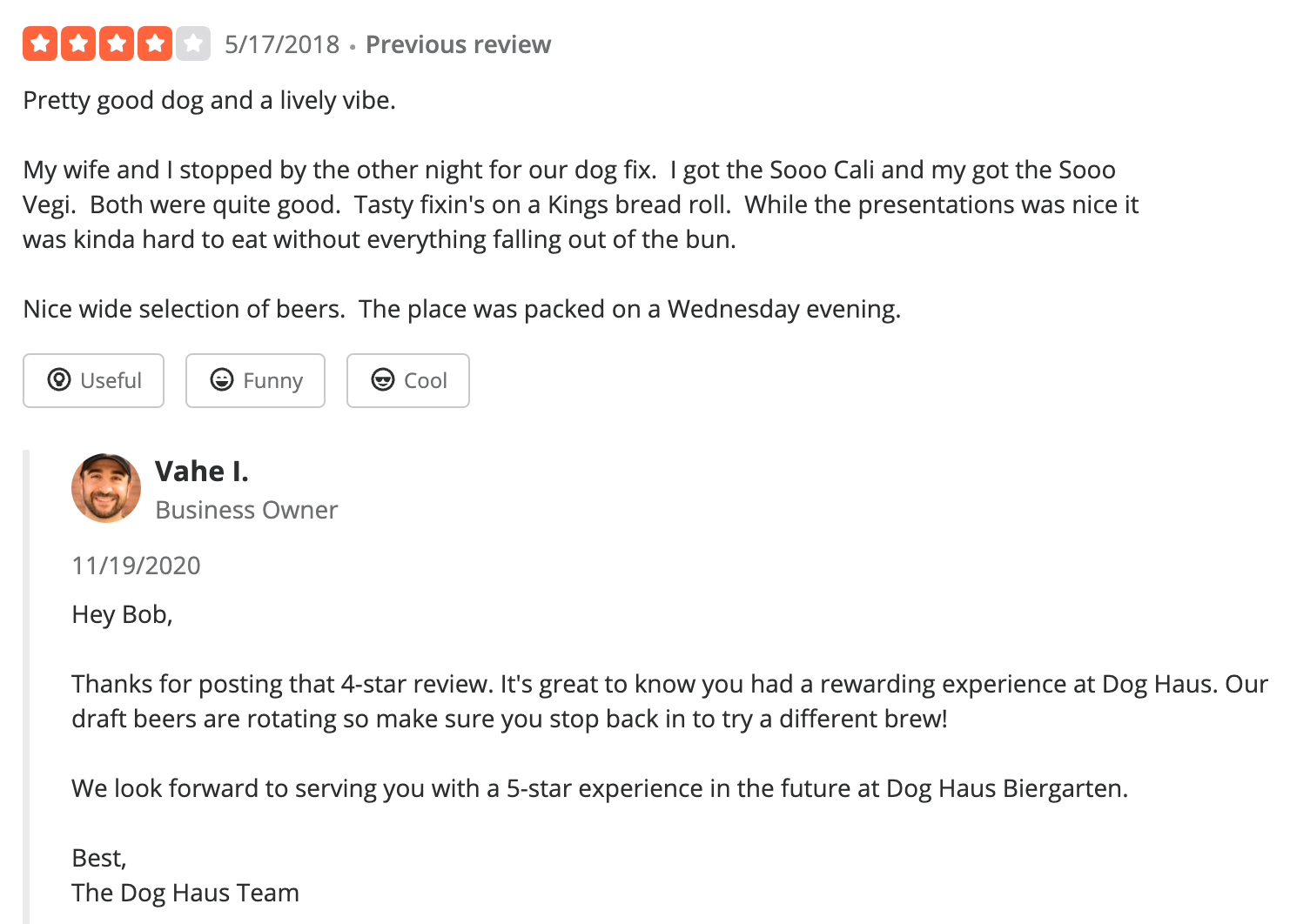
Wait & Respond
Wait until positive reviews reach the second page before responding. This way, you get the relationship benefits of thanking them while minimizing any potential harm from a poorly received response.
Don't Ignore Negative Reviews
Respond to each one as if it's a complaint management strategy to prevent future negative feedback.
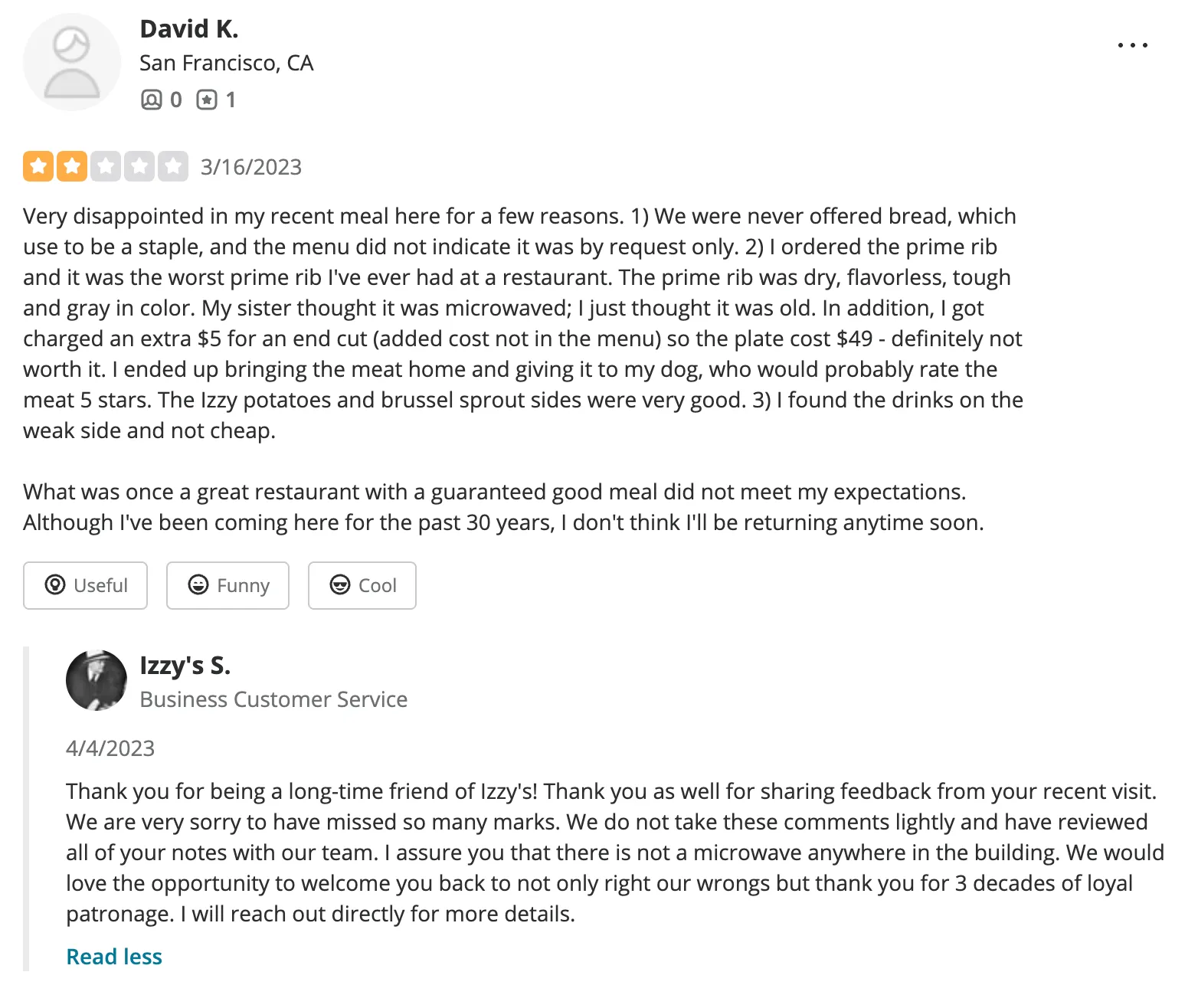
Replay With Personalized Responses
Make sure your responses are specific to the customer and their situation. Show them that you genuinely care about their concerns.
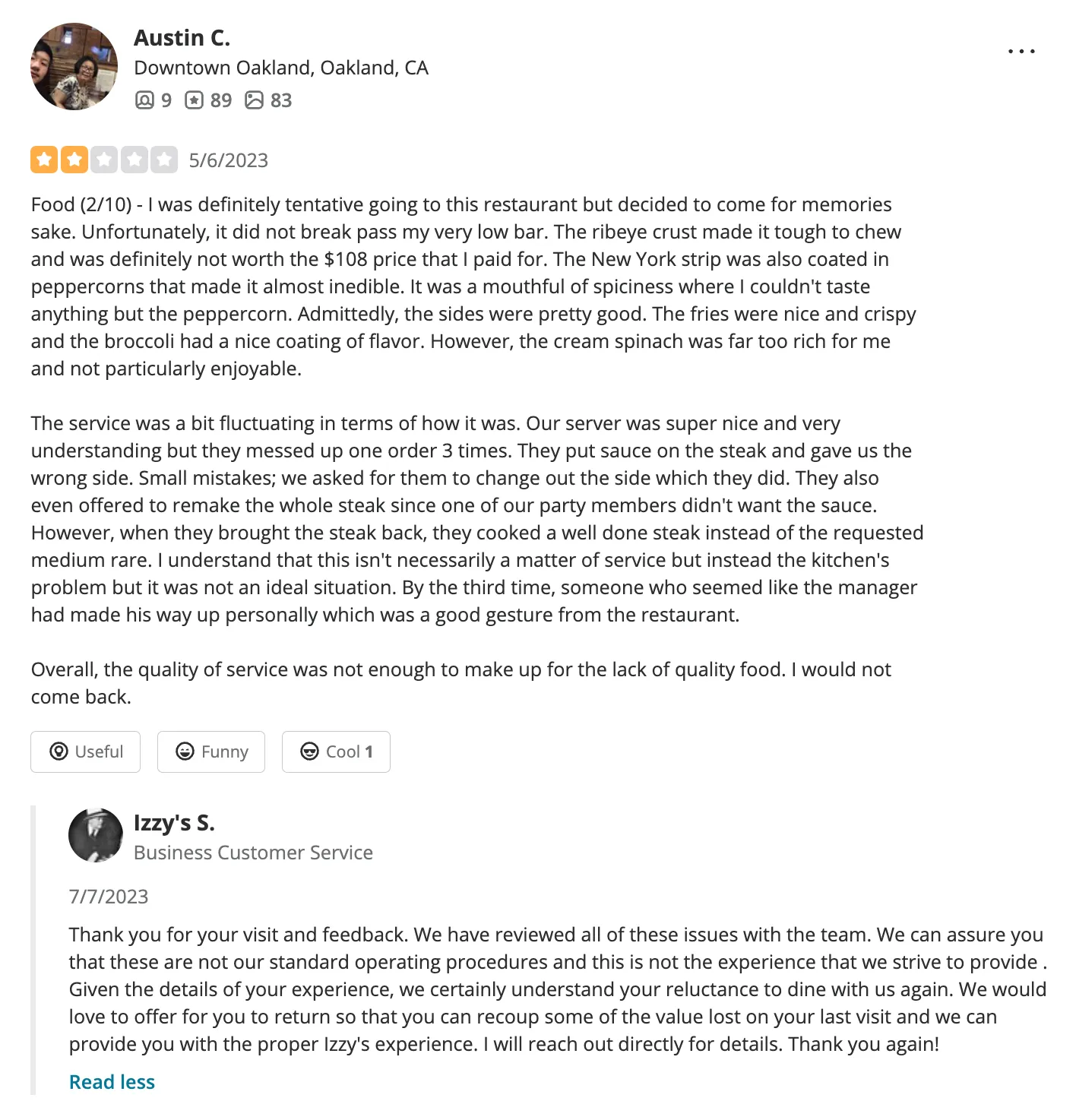
Speed Matters
The quicker you respond to a negative review, the less damage it can do. So, don't hesitate to address any concerns right away.
How To Get Yelp Reviews & Earn Customer Trust?
Restaurants and hotels are using Yelp every day to attract customers.
Here's a 5-pointer guide on how to make the most of Yelp to earn your customers' trust and build your brand reputation.
Build An Impressive Profile
First things first, create a fantastic profile on Yelp. If you are new to Yelp, claim your free business page and make it stand out. Check out your local competitors' profiles, whether they have 4 stars or fewer ratings, and analyze what attracts or drives away traffic. Your profile should have all essential details, a link to your website and menu, business info, and a gallery with top-notch images.
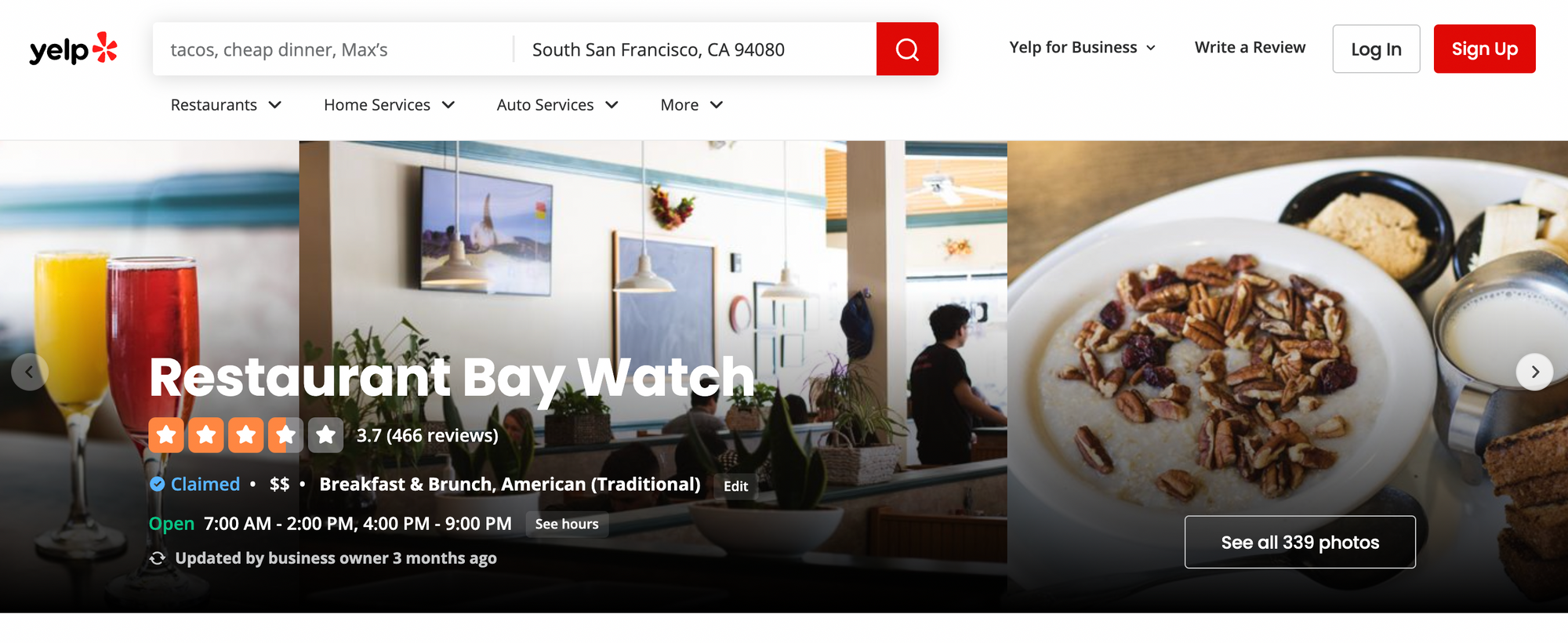
Engage With Reviews
Customer reviews hold immense value, so don't ignore them. Respond to both positive and negative reviews. Show your customers that you genuinely care about their feedback and are committed to improving their experience. Positive reviews add social proof and boost your overall rating, while negative reviews offer an opportunity for constructive improvements. Handle negative comments politely and work on addressing any shortcomings.
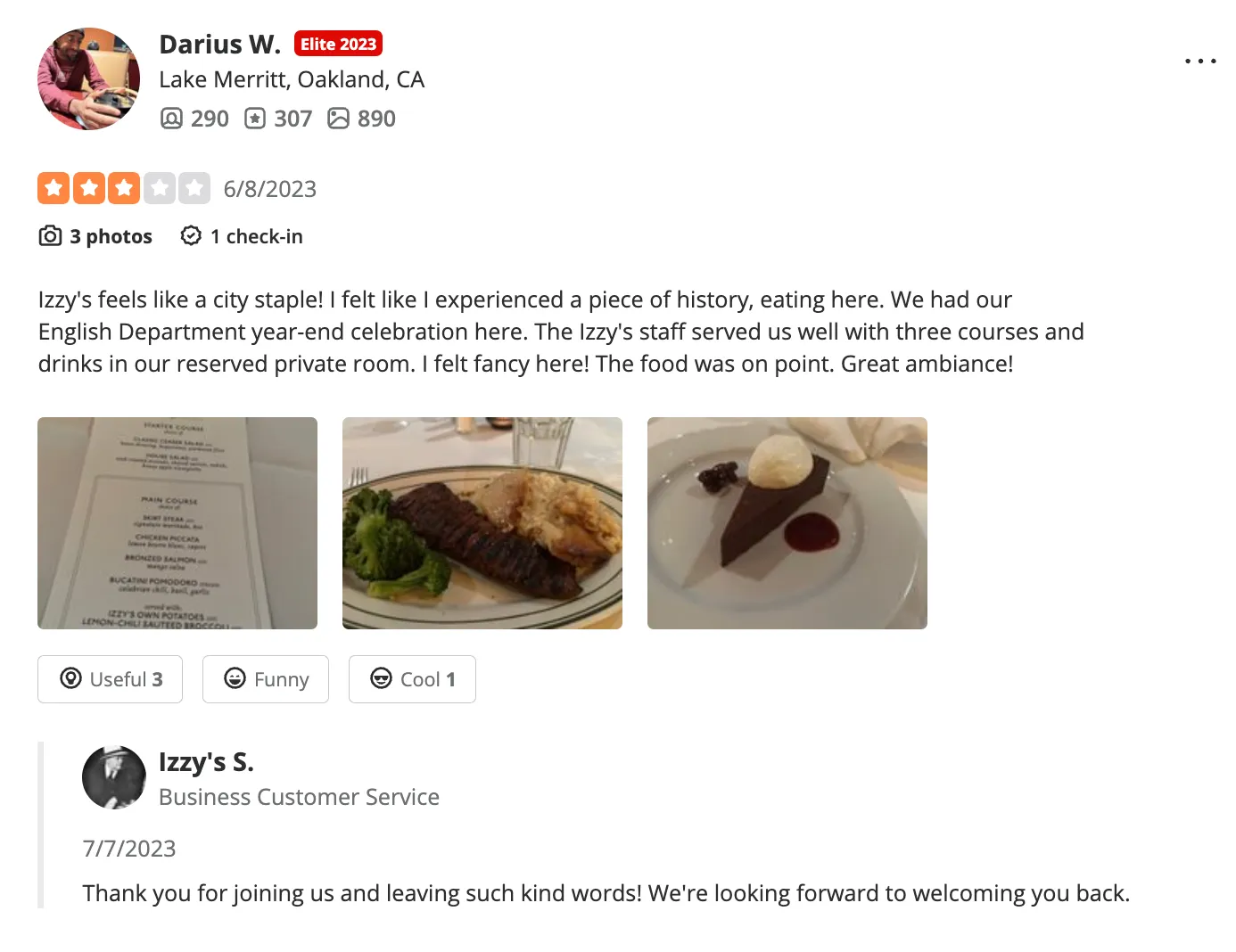
Showcase Reviews On Your Website
Use your customer reviews beyond just Yelp to boost your website's credibility. Handpick the best reviews and embed them on your official website. Displaying positive reviews on your site not only enhances its appearance but also builds social trust and encourages visitors to make reservations or bookings.
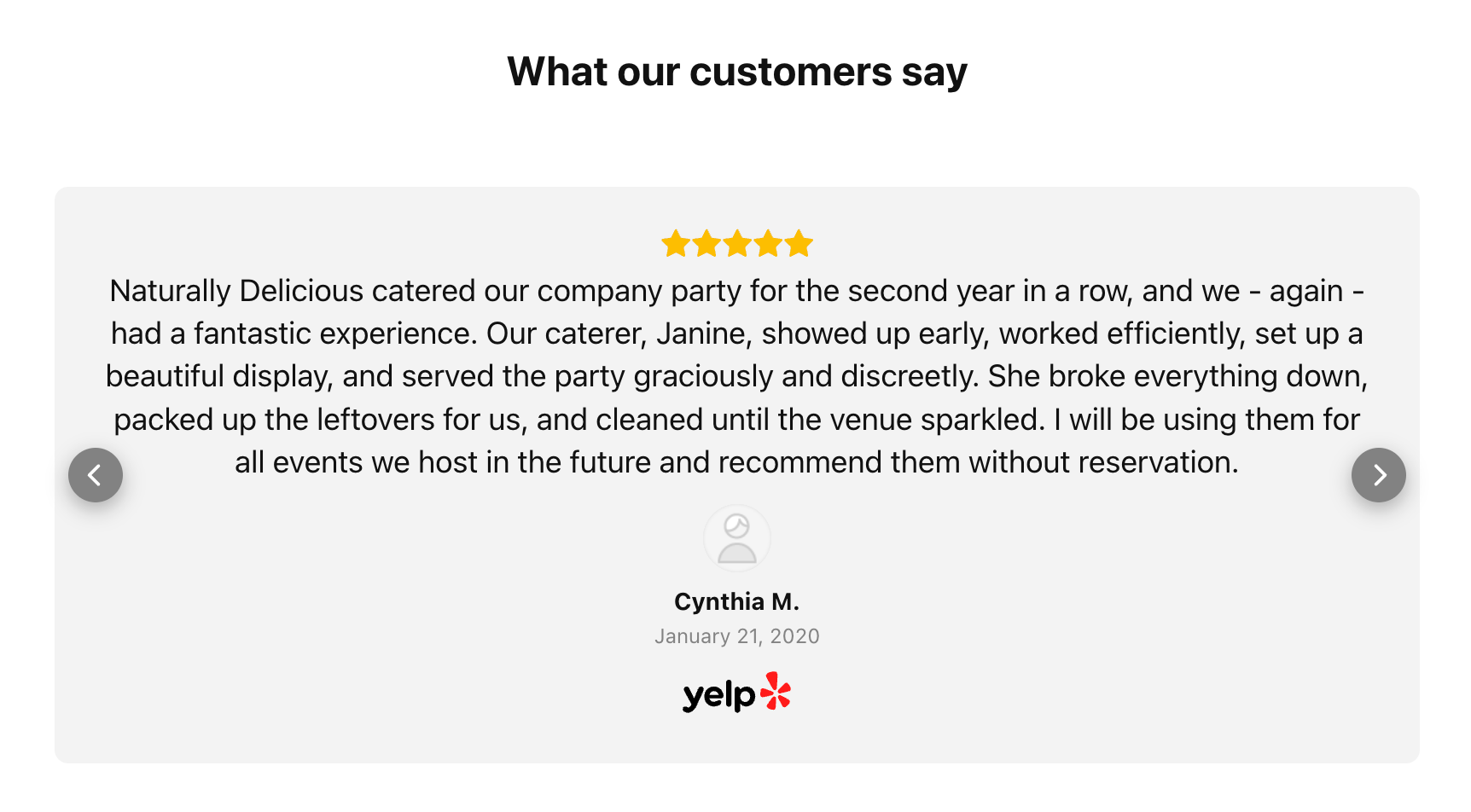
Source: Elfsight
Flaunt Yelp Reviews On Digital Signage
Digital signage can play a significant role in generating social trust. Consider employing a social media wall to display user-generated content, including Yelp customer reviews. This further strengthens your brand image and encourages other customers to leave their reviews on Yelp.
Use Yelp Metrics
Yelp offers insights into behind-the-scenes metrics that can help you improve your business strategy. Keep track of the traffic your profile receives, search results appearances, user engagement, and more. Use this data to guide your marketing efforts, customer preferences, and pricing decisions.
How Consumers Read Yelp Reviews?
Review Content & Style
The most critical factor customers consider when evaluating review trustworthiness is the content and style. They pay attention to the review's length, the type of information shared, and the level of detail provided.
Longer reviews with factual, relevant information are well-received. Emotions and subjective comments are a no-go for trustworthy reviews. Consumers want reviews that talk about the product or service experience with clear and relevant details. Short, vague reviews with overly positive or negative adjectives like "best" or "horrible" are seen as less reliable.
Use of visuals like photos or videos in reviews makes them even more persuasive.
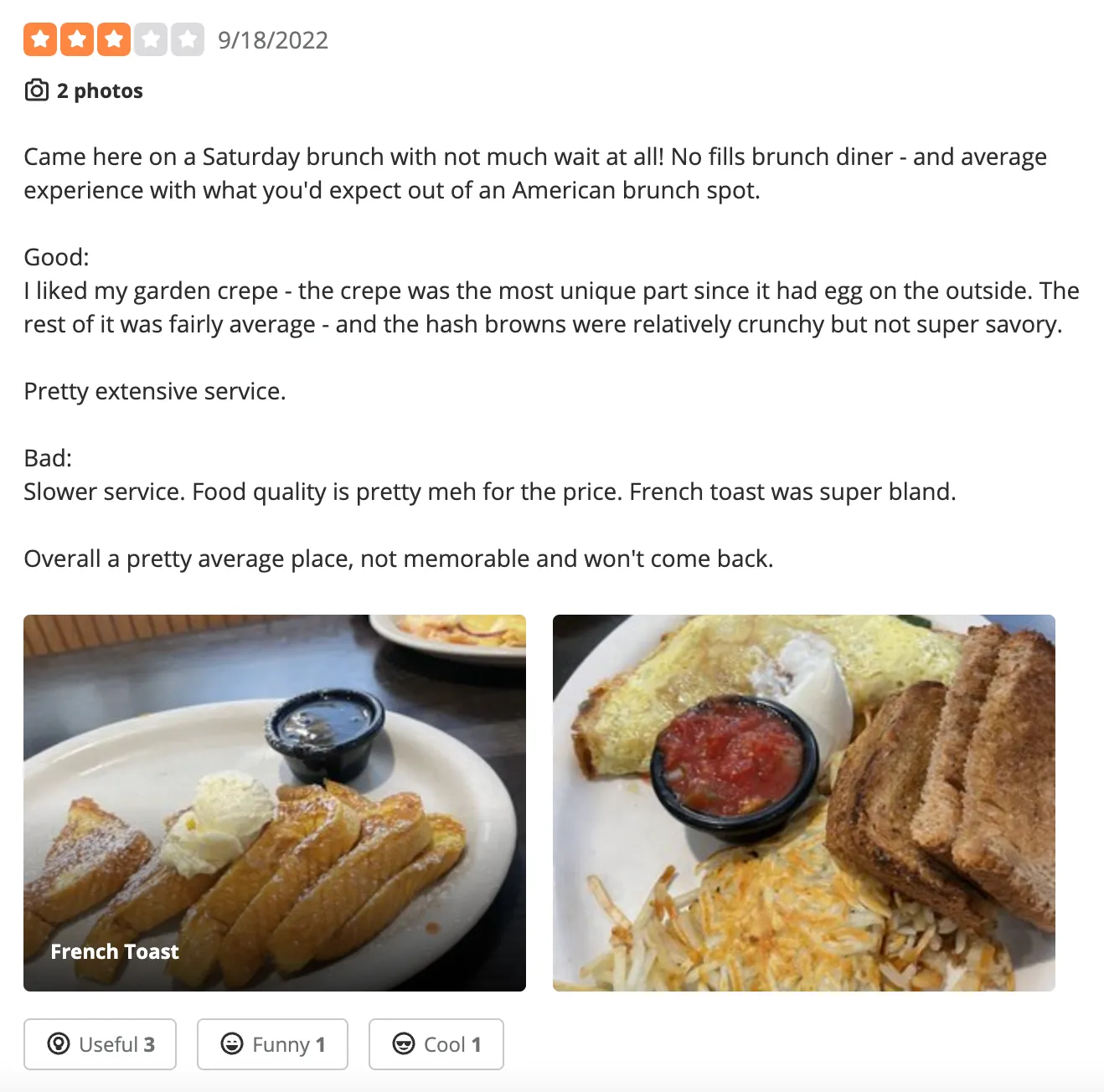
Review Valence & Extremity
Balance is key when it comes to review valence and extremity. Consumers tend to be skeptical of overly positive or extremely negative reviews, as they indicate bias or manipulation.
Instead, moderate reviews are considered trustworthy. Consumers scrutinize the reasons behind extreme opinions to determine the reviewer's credibility. Emotional content, whether overly positive or negative, is viewed as less reliable.
Source Factors
Consumers look into the reviewer's profile when they encounter suspicious reviews or extreme viewpoints. Red flags include new accounts with only one glowing review, profile pictures (real photo vs. default image), and account activity.
Reviews from reviewers with questionable profiles are often discounted by consumers.
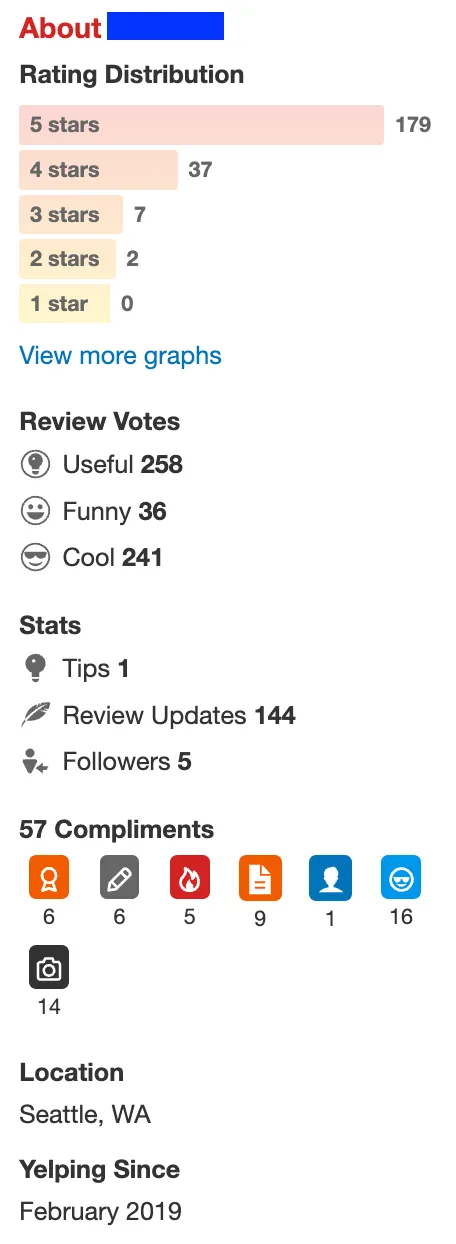
Review Pattern Criteria
Consumers search for trends and patterns in reviews, especially for expensive products or services. They look for recurring objections, glowing reviews from one-time reviewers, and consensus among reviewers, all of which indicate trustworthiness. They pay attention to similarities between reviews to detect fake ones, like identical titles, structures, wording, and phrases.
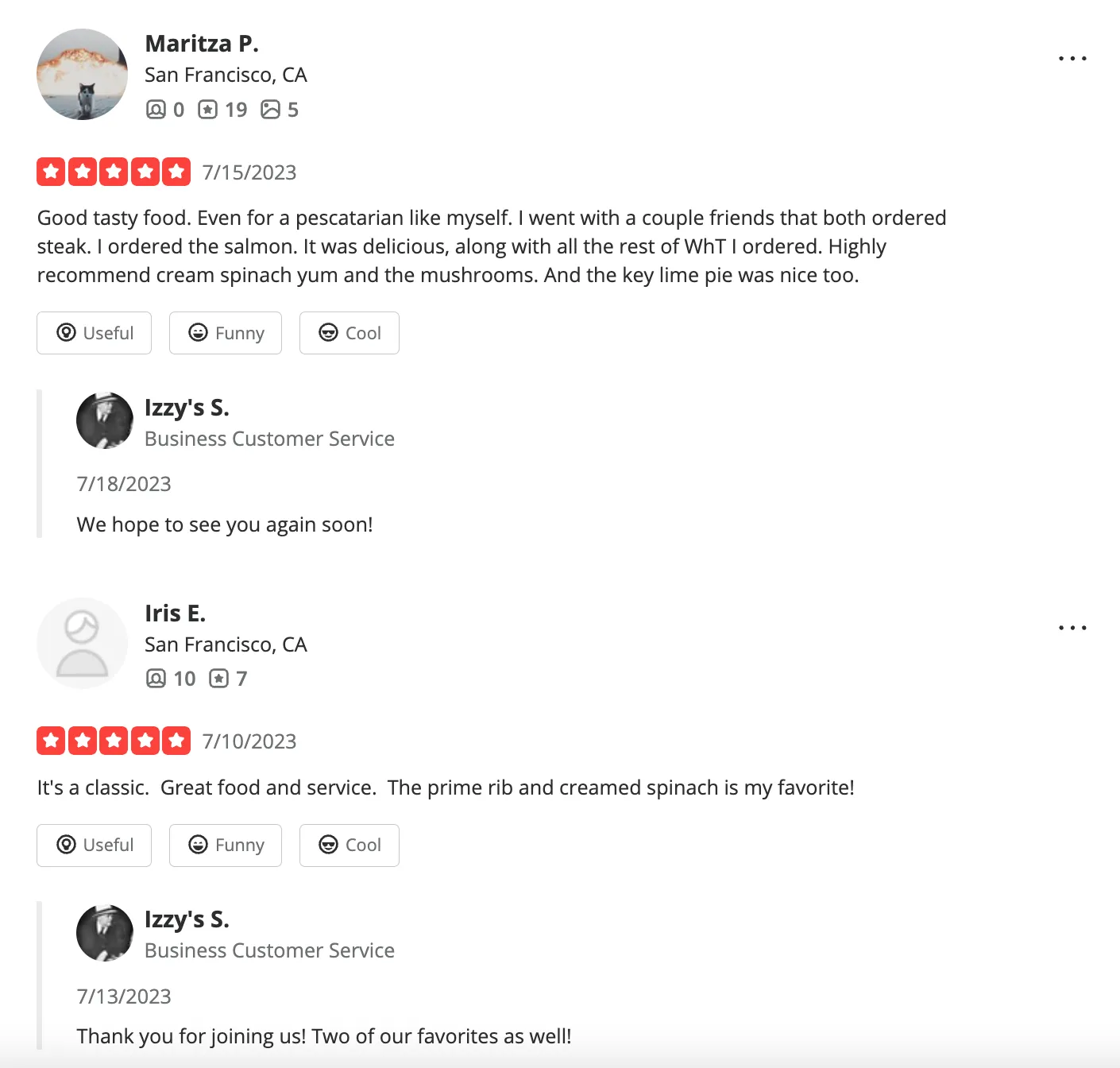
The Reviewer's Involvement
The level of a reviewer's involvement during the purchase process influences the effort they put into writing a review. For instance, if someone spends a lot of time searching for a product, they will likely provide a more detailed evaluation of their experience.
Consumer Experience
Experienced users, those familiar with writing and using reviews, are more adept at identifying fake or untrustworthy reviews on platforms like Yelp, Google, or TripAdvisor.
The Medium
There are three types of review mediums:
- First-party reviews (from corporate websites)
- Independent review websites
- Third-party review websites (like Yelp or Google).
First-party reviews tend to be overly positive or negative and may carry corporate bias. Consumers often view reviews on third-party websites as more objective since these sites are not selling products for local businesses.
How Does Yelp Deal With Fake Reviews?
Did you know that Yelp removes around 25% of its reviews?
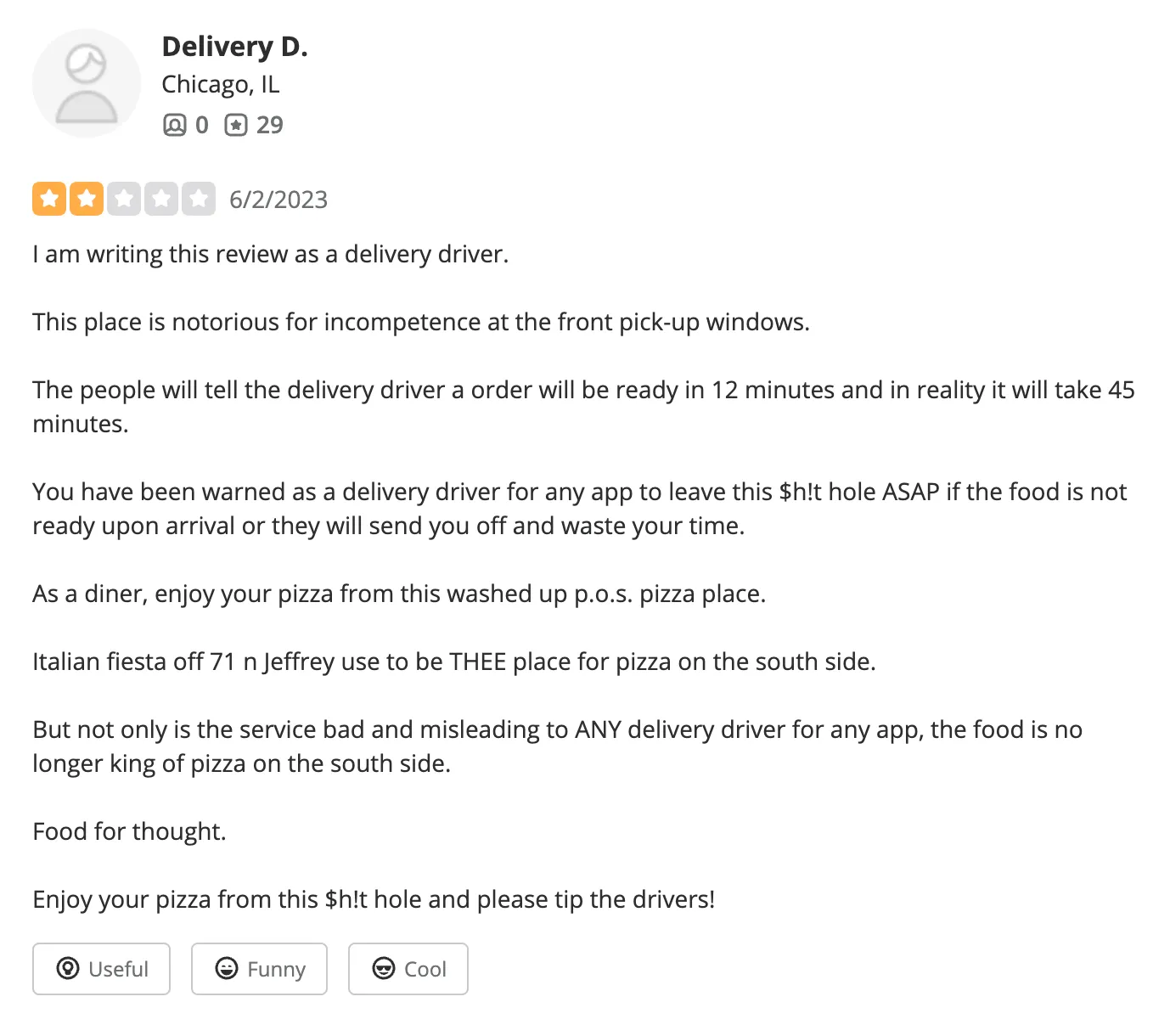
Yup, they take their review policy quite seriously and use different tactics to combat fake or inappropriate reviews. Let's take a closer look at their approach:
- They use ranking penalties, also known as shadow banning, to prevent businesses with fake reviews from showing up in search results.
- Yelp keeps an eye on businesses to check if problematic behavior continues.
- In some cases, they may go as far as removing the entire business page or listing from their platform.
To maintain the integrity of its platform, Yelp encourages users to report any suspicious activity they come across. If a review violates their terms of service, they want users to provide evidence to their support team.
Why Are Some Yelp Reviews Filtered?
Here's how Yelp's review system works. They have tools that automatically evaluate every review. The goal is to ensure that all reviews are genuine, unbiased, and driven by customers' experiences.
The reviews that you see on a business's Yelp profile are the ones labeled as "Recommended." These are considered the most reliable and helpful.
But, if a review seems a bit suspicious according to Yelp's criteria, it gets pushed to the "Not Recommended" section. It doesn't mean it's fake, but Yelp wants to be extra cautious with such reviews.
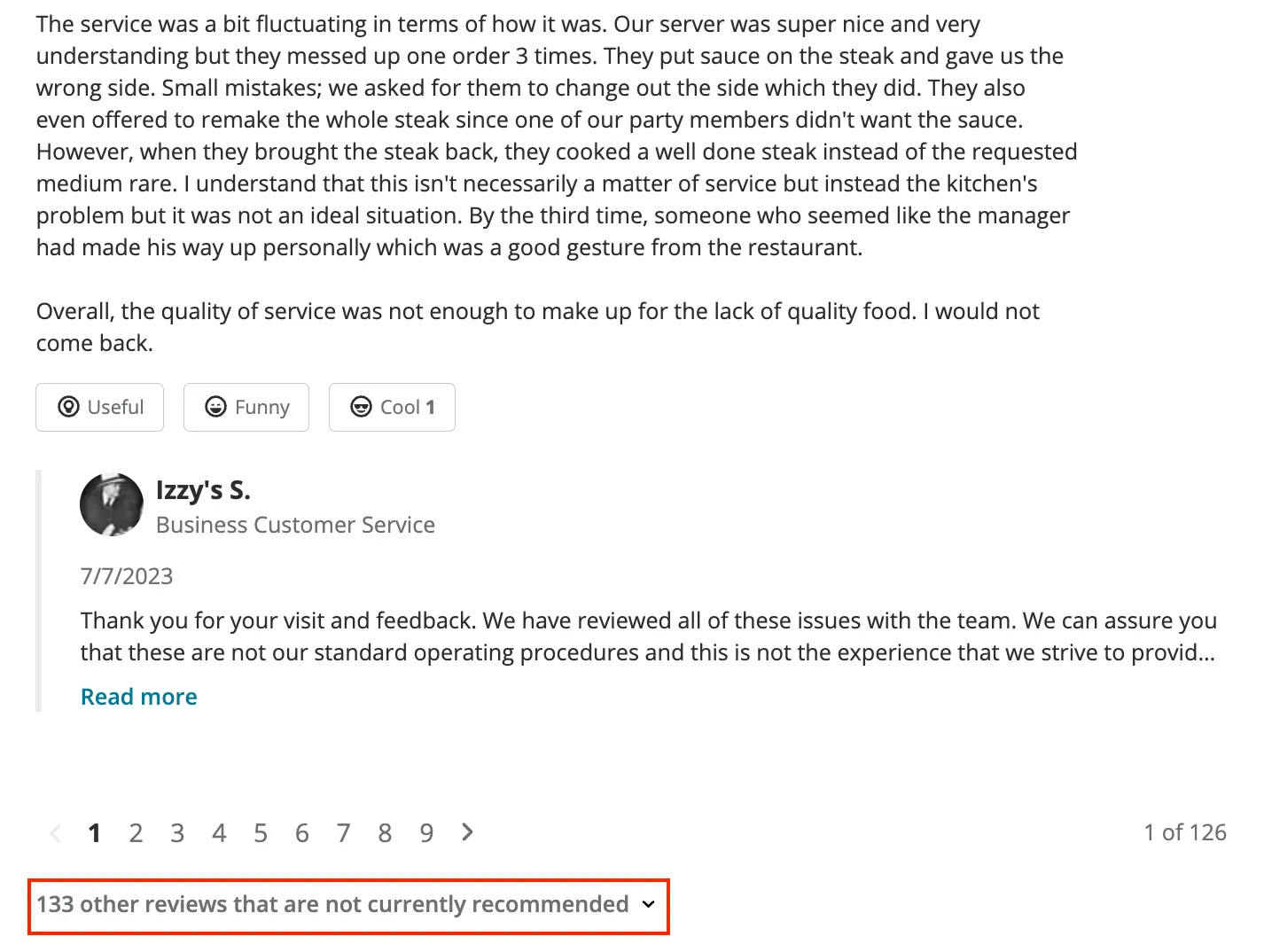
Yelp has some specific reasons for flagging and filtering reviews. They don't like artificial or unnatural stuff, like incomplete reviewer profiles. It's also a red flag if a reviewer only has positive reviews in their portfolio. They also check if multiple reviews come from the same IP address.
Reviews can also end up in the "Not Recommended" section if the reviewer deletes them, if they are found to be fake or manipulated, or if Yelp itself removes or filters them.
It can be a bit discouraging, especially if your business got some spontaneous and legit reviews from real and happy customers. But, Yelp just wants to make sure everything's on the up and right.
How To Recover Filtered "Not Recommended" Reviews?
Yelp is constantly learning more about each reviewer, and based on that, some reviews may be removed from the "Not Recommended" section. So, the order of reviews or the reviews themselves might change as Yelp gets to know the reviewers better.
You don't really have much control over this process. That's why it's super important not to force your customers to leave reviews. Instead, it's better to spread awareness among your customers about Yelp so that they can leave their reviews naturally. This way, their reviews are more likely to bypass Yelp's "Not Recommended" filter.
Wrapping Up!
Yelp is still a kickass review platform to boost your business year after year. Yelpers are on your side, as most of them are eager to find your business. They want to shout out about you to their fam and friends for ages to come.
Don't miss out on this golden opportunity ?
Need help tracking your online reviews on Google My Business, Google Play Store, App Store, Trip Advisor, TrustRadius, Yelp, and more? Sign up for a free demo with Statusbrew today to learn how we can help! ?
Statusbrew is an all-in-one social media management tool that supports Facebook, Instagram, TikTok, Twitter, Linkedin, YouTube, and even Google My Business.
FAQs (Frequently Asked Questions)
Here are some commonly asked questions on Yelp for businesses:
How do I see Yelp reviews?
There are 2 ways to see Yelp reviews. You can:
- Visit the Yelp website or app and search for the business you are interested in. The reviews will be listed on the business's page.
- Follow a link to a Yelp review from a search engine or social media.
What is Yelp used for?
Yelp allows users to find and rate businesses. It also offers a variety of other features, such as:
- Business listings: Yelp lists businesses in a variety of categories, including restaurants, shops, and services.
- Reviews: Users can leave reviews of businesses, rating them on a scale of 1 to 5 stars.
- Photos: Users can upload photos of businesses, which can help other users get a better sense of what the business is like.
- Tips: Users can share tips about businesses, such as their favorite dishes or services.
- Deals: Yelp often lists deals and discounts from businesses.
How to change name on Yelp?
Log in to your account and go to the Account Settings section. Click Profile, enter the new name & click Save Changes.
How to delete a Yelp review?
Log in to your account and go to the “Reviews” section. Find the review you want to delete. Click on the trash icon and select Confirm.
How to delete a Yelp account?
To delete your Yelp account, log in to your account and go to the Yelp Account Closure page. Send a request & wait.




Explore the Statusbrew range of social media tools
Cancel anytime!